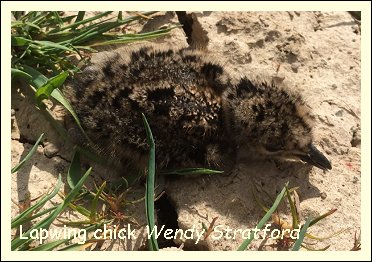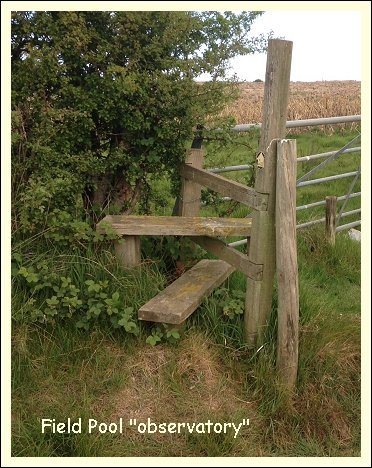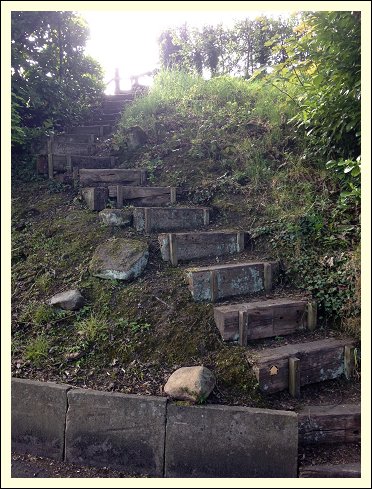Monday 27th April2020
A mere 8½ miles today for Wendy Stratford!
Hi Tony,
8.5 mile walk today from Smith Lane to crash gate 9 via Lady lane, then through the Bollin tunnel and round the edge of the airport fence (north east - must be a plane-spotters track). Just before the runway 1 tunnel Bridget and I cut across fields to Castle Mill Hill and along the River Bollin for a while. Then back across footpaths to the top of Castle Mill Lane, then Higher House Farm, across country to Breach House Lane then back via Barnshaw Smithy (wished they were serving coffee!) and the field path behind Mobberley station. The weather was much better than forecast - full sun most of the way.
Saw some lovely birds, the highlight (almost a lowlight) being 2 tiny lapwing chicks. As we approached an open gateway behind Higher House farm adult lapwings flew up and, calling, tried to distract us. Just as well as the 2 chicks were on hard ground just the other side of the gate, on the footpath... we just saw them in time.
On the Bollin, as we had lunch, watched a lovely pair of grey wagtails catching insects over the water and taking them back to a nest hidden on a small island. All day robins, chiffchaffs and blackbirds were singing, and think I heard a blackcap near crash gate 9. Also heron, cormorant (at the fishing lake on Small Lane), song thrush and buzzard.
Thanks
Wendy

Bob Groom was back on Knutsford Moor today and bumped into his favourite bird!
Decided to give Knutsford Moor another chance today. Still no swifts or hirundines, although a Swallow did appear over King Street as I was leaving. It pays to look up, however, for as I was scouring the sky a Hobby approached from the direction of Tatton and got as far as the Moor Pool and circled before going back the way it had come.
Bob Groom
In Tatton itself Darren Morris seems to have missed the Hobby but had Kingfisher and Common Sandpiper.
Sent from my I phone - Kingfisher and common sand on scout camp jetty plus a Male Mandarin and an Oystercatcher.
10°C this morning in Mobberley and slightly overcast but non the worse for that, it makes for easier viewing when looking in the direction of the sun, especially over water. A good start to proceedings, as I walked past the last of the bungalows on Pavement Lane, the unmistakable "reeling" of a Grasshopper Warbler [#68] coming from a wild area across the other side of the field from the bungalows. For those that know it, it's the area where the Little Owls used to nest. It was a distance away and quite difficult to pick out as it (presumably) moved it's head from side to side in song. I'll try again tonight when the hubbub of garden mowers, strimmers and chainsaws etc. has diminished. Walking across the fields to the usual pool - 3 Yellow Wagtails, 6 Skylarks, one Yellowhammer in song and a rather tatty looking Raven carrying food for it's young, which should be on the wing soon.
Sat in the pool's "observatory" there was plenty of entertainment - Swallows drinking on the wing from the surface of the water, Yellow Wagtails feeding on the margins, House Martins collecting mud, 2 Shelduck, the first Reed Bunting I've seen there and the male Shoveler has been joined by a female! The Mallard duckling (I counted at least 7) are with the female bird on the small overgrown pond to one side of the main pool.
Walking back to Mill Lane (near the Roebuck and Bull's Head) I found that the farmer has diverted the footpath so it doesn't pass along the edge of the farmyard but cuts across to the stile on Mill Lane rather than Damson Lane. He's done a good job, with a proper stile and notices showing the route to take but a word of caution, the stile at Mill Lane leads down some very steep steps to the road below. No hand rails.


Geoff and Sheila continue their good work in Mere.
Today we did our 7km walk to Rostherne and surrounds. The Sedge Warbler was still singing in the Little Mere and still 11 ducklings with 2 females which is good going. At the end of Mere Mill Lane we turn left over a stile and walk along a small copse - there are so many Blackcaps and Chiffchaffs would be very difficult to do a Common Bird Census there! We eventually reached the Cicley Mill angling pond and heard another Sedge Warbler - new species for the pond. The Great Crested Grebe was still sitting tight, while the Coots did a changeover duties. Nothing else to report J
Cheers.......Sheila and Geoff
Phil Hampson continues with his virtual tour of the Scottish Islands.
Tony
Continuing the tour :
Fionnphort, Iona and the Ross of Mull
From Fionnphort there is a small road that goes to Fidden, where there is a campsite, this is a great area for waders and there is always the chance of Crex Crex. Lapwings abound, cartwheeling in the sky and seem to be everywhere. The area around the campsite is grazed by farmers/crofters and the habitat suits breeding waders and other species such as Twite. Also there area areas of peat moorland as the road goes on. I have had my best ever views of Mountain Hare in this area, yes that's right Mountain Hare and at sea level. I have one photograph of this species, a single frame taken at Fidden, but, of course we can see these much closer to home in the Peak District. It is easy to lose time in this area exploring the small bays with sandy beaches watching the waders.
To visit Iona then you have to park the car up and walk down to the ferry, you cannot take your car across. If visiting Iona the biggest single tip I can give is avoid the busy bus times in the morning and afternoon as visitors from the mainland head towards and back from Iona.
It is a short ferry crossing but worth looking for a late Great Northern Diver which if you are lucky will be in breeding plumage a sight to behold indeed also there may be Gannets, Auks and Terns. Loch Scridain and the other sea lochs can be especially productive for GND and at times very close.
Once landed at Iona the scope is endless as Corncrake can be anywhere around the island. Look for fields with longish vegetation or nettle beds and be patient. The birds name is rather apt Corn Crake and I think they are really lovely with their chestnut wing coverts. Last time I was there we headed up the ferry ramp and turned left and we quickly came across a Corncrake in a small patch of longish grass up against a wall but showing very well indeed. Another trotted across the road. The call is unmistakeable. I have always been in mid May and never been disappointed but it is luck of the draw.
In Islay I spent countless hours surveying Corncrake and only ever saw one but in those days we were only counting 7 on the whole island. Iona has a far better density. Should you be lucky enough to see one just take your photographs and then sit and marvel if he is calling away at the effort that he puts into it. I love the sound but had I been a crofter with one calling alongside the house all night then maybe I'd not be too happy.
The main calling period is of course night but they do also call during the day but not as continuously. Then if you are lucky enough to see juveniles don't be surprised as they are black balls of fluff! Sadly Crex Crex is another species that suffers from mass hunting on its migration route. I read some statistics a while ago about how many are caught (killed, massacred etc, etc) on migration and the numbers were staggering but I'm afraid I cannot recall or find the article via Google. This is a species that a great deal of conservation effort is put into in the UK, one example being late cutting of silage, sadly the first cut in a year invariably coincides with Corncrakes hatching with the inevitable result. Grants were available for farmers to cut later thereby allowing the youngsters to escape, I have no idea if this is still the same situation. I spent many hours measuring vegetation growth and density in Islay, they love nettle beds. We had a very odd device to do this a bit like a plate of a pole with a scale down the side - very Heath Robinson, no idea who designed it but it provide the stats the RSPB Scientist needed. A hard job this one not from effort point of view but it also coincided with midge time and clegs (horseflies), these are vicious, nasty things and can bite through material.
For those that don't know there is a captive breeding program for Corncrakes based at Pensthorpe in Norfolk and these birds are released in Eastern England with some success (this information is in the public domain so no secrets disclosed!).
Iona isn't just about Corncrakes though and it is well worth a wander around, waders abound, eider and passerines all to be found. Plus the Abbey of course and a pint in the pub.
I've put a new webpage on 10X50.com that will contain links to copies of these emails, so they're saved for posterity. Future historians won't believe it!


